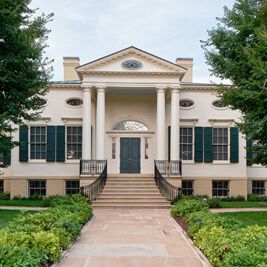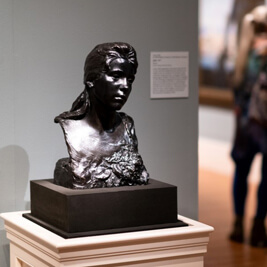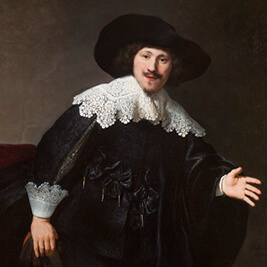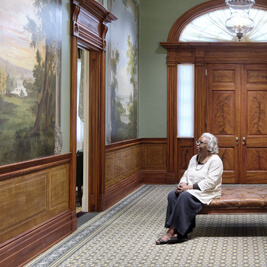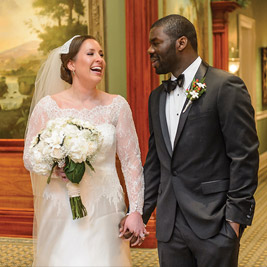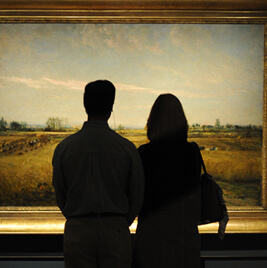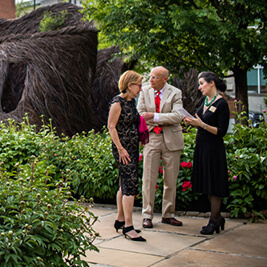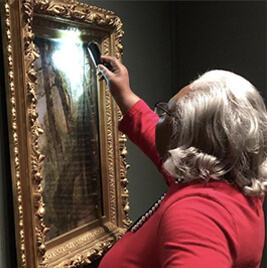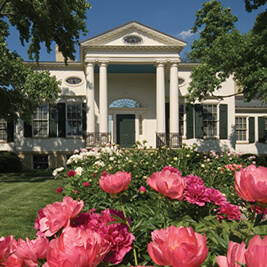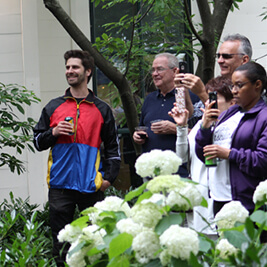- Do + See
- Dine + Host
- Give + Join
- Educate + Learn
Collection Connection | The Power of Landscape
By Tamera Lenz Muente, Associate Curator
At the beginning of the year, Adobe Stock, a provider of royalty-free photographs and graphics, predicted that because of the overwhelming demands and distractions of daily life, calming landscapes filled with “silence and solitude” would be among the most popular images in 2018.
For centuries, artists and writers have considered the effects of landscape on the human psyche. In 1757, Irish statesman and philosopher Edmund Burke published On the Sublime and the Beautiful, which defined two different emotional responses to landscape in nature and in art. Burke stated that the beautiful is comforting and fosters pleasant and calm feelings—a placid lake, a perfectly formed seashell, a clear blue sky. On the opposite end of the spectrum, the sublime overwhelms with awe, terror, or danger—a steep precipice, a thunderstorm, a crashing waterfall. Burke explained that when experienced at a distance, such as translated through art, the sublime generates delight.
Late in the 18th century, British artist and author William Gilpin wrote Three Essays on Picturesque Beauty, on Picturesque Travel, and on Landscape Painting. Gilpin’s ideas about the picturesque—which lies between the beautiful and the sublime—gained a cult following. With the rise of the Industrial Revolution, people began seeking refuge from fast-paced, dirty cities. Gilpin suggested that uplifting landscapes in both nature and art could provide an escape.
According to Gilpin, to be considered picturesque, or “picture-worthy,” a landscape must include elements such as roughness, variety, and contrast. “Turn the lawn into a piece of broken ground,” wrote Gilpin. “Plant rugged oaks instead of flowering shrubs . . . , scatter around a few stones, and brushwood. . . . Make it rough, and you make it also picturesque.” He encouraged individuals to find picturesque views, which were also included in travel guides. He urged artists to take liberties in their paintings to make them picturesque. European and American landscape painters utilized the tenets of the beautiful, the picturesque, and the sublime throughout the 19th century. Even now, landscape art can be viewed within the context of these ideals and whether the artist embraces or rejects them.
Ansel Adams often described his own feelings about nature and the landscape, and expressed these emotions through his photographs. In 1925, a young Adams wrote to his future wife, Virginia, “I hope . . . that you were benefited in mind and soul and body by the divine influence of the mountains. I think nothing can be compared to the Hills for the elevation of spirit, and peace of mind. . . .” A few years later, he described a restorative experience of the sublime: “Today the great cliffs are wreathed in steel-gray vapors: their vastness is revealed in the strange intimate glimpses through rolling clouds of crags and pines and snow. . . . The complexities of the modern world . . . [are] supremely foolish in the face of the eternal openness and beauty of these mountains. . . . I can forget the people, the studios, the gasoline
and wander off into the oak shaded rocks and be happy.” Adams’s photographs continue the tradition of 19th-century landscape artists by utilizing elements of the beautiful, picturesque, and sublime to evoke feelings of tranquility, enchantment, and awe.
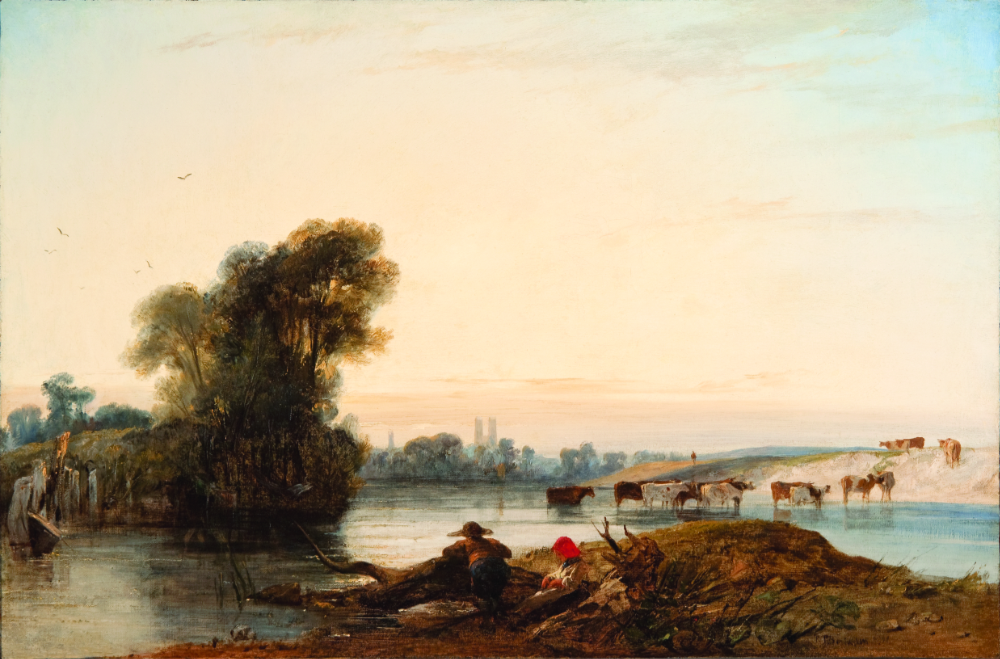
Richard Parkes Bonington (English, 1802–1828), View near Mantes, 1826, oil on canvas. Taft Museum of Art, 1931.443
The Beautiful: Pleasant, calm, familiar
This painting expresses the tranquility that Edmund Burke described as the beautiful. Placid water, gently flying birds, docile cows, and a calm sky create a serene atmosphere that generates pleasant feelings in the viewer.
Recent studies have examined the power of landscape imagery. In 2006, patients at Italian cancer centers were surveyed about the clinics’ environments. After art was installed, the patients experienced reductions of stress, anxiety, and blood pressure, reporting that the most stress relieving subjects were landscapes. In 2017, inmates at an Oregon prison were presented videos of landscapes. Eighty percent of the inmates reported calmer feelings and improved sleep.
The next time you’re feeling stressed or overwhelmed, unwind with a visit to the Taft Museum of Art, where you can see landscape paintings in the permanent collection or landscape photographs in Ansel Adams: A Photographer’s Evolution. As the naturalist John Muir wrote more than a century ago, “Everybody needs beauty as well as bread.”
The Picturesque: Roughness, variety, contrast
Autumn provides ample opportunities for picturesque landscape views. Here, Diaz painted varied foliage colors and included bare branches jutting out from heavily textured tree trunks. Approaching dark clouds provide contrast to the white clouds and bits of blue at the center of the sky.
The Sublime: Awe-inspiring
Adams’s photograph of the highest mountain in North America elicits wonder and awe. While the snowy peaks and shadowy crevasses of Denali (once known as Mt. McKinley) are imposing, the mountain’s reflection in still water imparts a sense of tranquility, making the image an intersection between the sublime and the beautiful.
